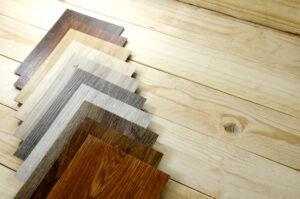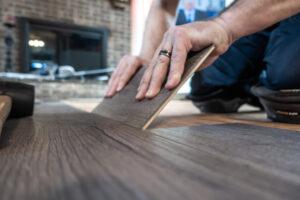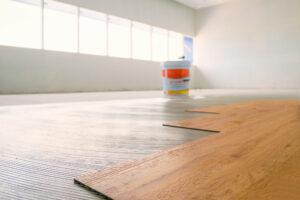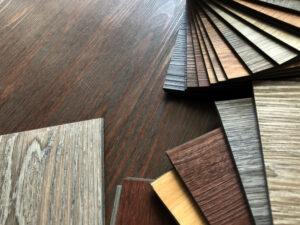Vinyl Sheet vs. Vinyl Plank Flooring: What to Know
It is easy to become frustrated and overwhelmed when it’s time to replace your flooring. There are literally dozens of different types of flooring to choose from. Each has a particular set of features and benefits to suit your needs. Even more confusing can be the almost infinite number of colors, designs, patterns, and textures when it comes to satisfying your tastes.
The wide range of prices can also be difficult to deal with. The existing base floor preparation, the choice of bonding agents, and any special installation requirements can make even the most experienced, do-it-yourselfer freeze with indecision.
The good news is you have started in the right place by doing research. Through the course of this article, we will share some of the main considerations when it comes to making your flooring choice. We’ll present some of the upsides and downsides for the most popular choices when it comes to vinyl flooring. By the end of the article, you’ll have a better level of confidence with which to move forward and a good sense of what to do next.

What comes first, the size of your budget or the size of your floor?
The first thing to do is to settle on the size of the project. Is it one small room like a family room or is it the whole main floor? How much money do you plan to spend? For most people there’s a bit of horse trading involved. In the end, it may be a happy compromise.
Whatever the case, it’s better to know now during the planning period, than being surprised down the road halfway through installation.
What is vinyl sheet flooring?
Vinyl sheet flooring has been around for decades. It comes in rolls that are 12 feet wide and once professionally installed it covers the floor area in one contiguous surface. In cases where the floor is wider than 12 feet, it can be specially sealed to be practically invisible. Vinyl is the commonly used term to describe Polyvinyl Chloride (PVC).
Although vinyl sheet flooring was introduced at the 1933 Chicago World’s Fair, it became popular during the 1960’s. It is often confused with linoleum flooring, which is completely different other than the fact that it too comes in 12-foot widths. In the simplest explanation, vinyl sheet flooring is made up three layers: a base layer, a decorated layer, and a wear layer.
What is vinyl plank flooring?
Imagine taking a large sheet of vinyl flooring and cutting it into planks in the same size and shape as hardwood planks. During the 1970s, someone had the brainstorm to come up with an easier to install flooring material that had many of the same advantages as the more popular vinyl sheet flooring.

Luxury vinyl plank flooring or vinyl plank?
What’s the difference? Essentially, it’s the quality. A much thicker wear layer provides the ability to withstand many more years of wear and tear and the thicker wear layer also makes it more scratch resistant.
Let’s look at some of the advantages and disadvantages of each type of flooring here.
Vinyl Sheet Flooring Upsides
– Water resistant
– Resistant to stains
– No seams – one contiguous sheet
– Easy to clean
– Economical
– Pet and scratch resistant
Vinyl Sheet Flooring Downsides
– Professional installation highly recommended
– If damaged, repairs can be expensive
– Specific base preparation highly recommended
– Limited aesthetic value
– Associated with low cost
– Can fade overtime in the sunlight

Vinyl Plank Flooring Upsides
– Similar appearance to wood flooring
– Great variety of textures, colors, and patterns
– Easy to clean
– Reasonably priced
– Pet and scratch resistant
– Simple installation/peel and stick option
– Can fade overtime in the sunlight
Vinyl Plank Flooring Downsides
– Low-cost choices can emit (VOCs)
– Can be damaged by heavy/sharp objects
– Can be noisy depending on installation method
– Gaps between planks can develop

Luxury Plank Flooring Upsides
– Almost indistinguishable from wood in appearance
– Low noise
– Water resistant
– High degree of scratch resistance and excellent wear and tear properties
– UV layer resists sun fading
– Available with cork underlay to further reduce noise and provide cushioning underfoot
– Available with a rigid core that provides incredible durability
– Technologically advanced printing allows for near infinite variety of appearance
Luxury Plank Flooring Downsides
– Some higher end choices start to approach the cost of real wood
Cleaning can be a joy
Whether you choose vinyl sheet flooring, vinyl plank flooring or luxury vinyl plank flooring, keeping these floors clean is as easy as it gets.

Cleaning vinyl flooring is just about as easy as it gets!
Regularly sweep or vacuum your floor to prevent tiny, hard-to-see grit from making your floor appear dull. A quick, damp mop will pick up the finest particles you may have missed. Pick up any spills as soon as they happen.
These floors are very stain resistant but nothing’s perfect and you don’t really want to experiment with your beautiful floor. Avoid using harsh cleaning agents or cleaning agents that contain oil, polish or wax. They aren’t necessary.
A pH-neutral floor cleaner or a bit of vinegar mixed with water is all you need. Remember to use felt pads under furniture and make sure your agitator or beater bar on your vacuum is off.
Some other questions to ask yourself
Ultimately, your flooring choices may play a significant role in the value of your home. Are you expecting to satisfy your own needs or are you expecting to increase the value of your home to potential buyers? How long are you expecting to live in your home? How important is cost and convenience? Do you live in a part of the country where home prices are generally stable or are they volatile?
The numbers are important and yet, so is the joy and pride of coming home to a warm and welcoming new floor. Be sure to do your research and then look for a well-established retailer in your local area. Take your time to ask their experts as many questions as you can and then enjoy the result.


